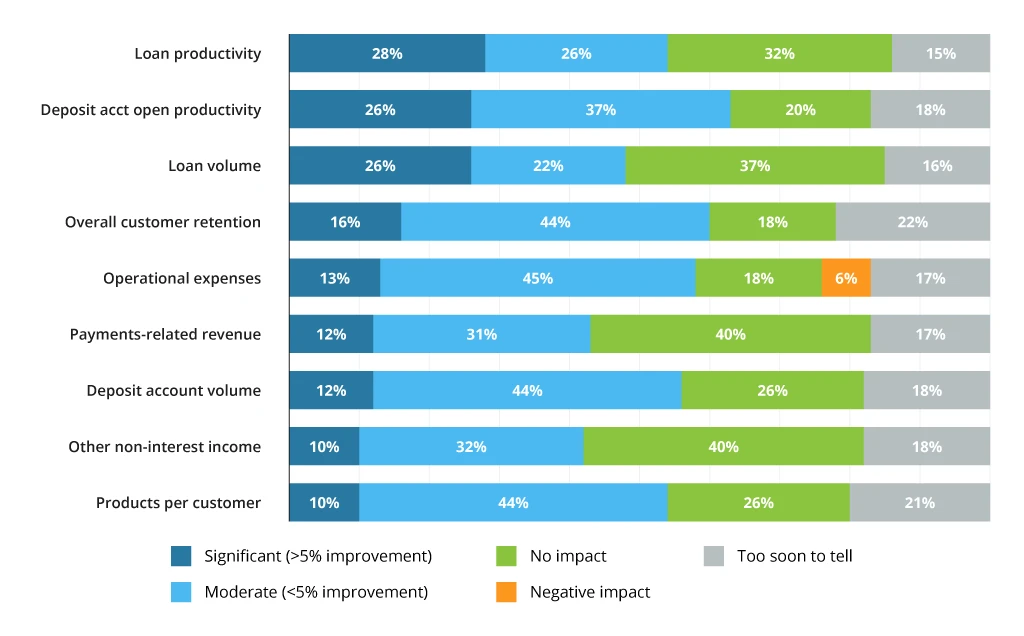Data Analytics in Banking Industry: Driving Innovation and Efficiency
In today’s fast-paced financial world, data analytics in banking industry has emerged as a game-changing tool that transforms how banks operate, manage risk, and enhance customer experiences. Financial institutions are increasingly relying on advanced analytics to gain actionable insights from vast amounts of data generated by transactions, customer interactions, and market trends. As technology reshapes the sector, leveraging data analytics is no longer optional – it is essential for achieving competitive advantage and sustainable growth.
This article explores the multifaceted role of data analytics in the banking industry, examining its core components, benefits, and real-world applications. We also highlight critical trends, challenges, and strategic considerations that banks must address. With deep insights supported by credible statistics and case studies, we provide a roadmap for navigating the complex landscape of digital transformation in finance. Finally, we demonstrate how partnering with a leading software development company can empower your organization to harness the full potential of data analytics.
Understanding Data Analytics in Banking Industry
Data analytics in banking industry refers to the systematic examination of large volumes of financial data to extract meaningful insights that inform decision-making. This process involves collecting, integrating, analyzing, and visualizing data from diverse sources – such as transaction records, customer behavior, social media, and market data – to enable banks to optimize operations and strategize effectively.
At its core, data analytics in the banking sector combines statistical analysis with machine learning techniques to predict trends, manage risks, and uncover new business opportunities. For instance, banks use predictive models to forecast credit risks and detect fraud, while also personalizing product offerings based on customer spending habits. According to Bain&Company, banks that incorporate data-driven strategies can achieve up to 10% higher profitability than their competitors.

Data analytics in banking industry usage (Source: Zuci Systems)
Core Components of Data Analytics in Banking Industry
1. Data Collection and Integration
Robust data analytics begins with comprehensive data collection. Banks gather data from multiple channels including ATM transactions, online banking, mobile apps, customer service interactions, and even social media. The challenge lies in integrating these disparate data sources into a unified system that provides a complete view of customer behavior and operational performance.
Modern banks employ advanced ETL (Extract, Transform, Load) tools and APIs to merge legacy systems with new data platforms. This integration enables real-time dashboards that display critical metrics such as transaction volumes, customer churn rates, and credit performance, thereby facilitating prompt decision-making.
2. Advanced Analytical Techniques
The real power of data analytics in banking industry comes from applying advanced techniques like predictive analytics, machine learning, and artificial intelligence (AI). These methods allow banks to forecast trends, identify patterns, and make data-driven decisions. For example, AI models can detect unusual spending patterns that may indicate fraudulent activity, while predictive analytics can assess creditworthiness more accurately than traditional methods.
In practice, these techniques enable banks to tailor their services, reduce operational risks, and even automate routine tasks. According to PsicoSmart, AI-driven analytics can reduce fraud-related losses by up to 50%, while also enhancing customer satisfaction through personalized offerings.
3. Real-Time Reporting and Visualization
Effective visualization tools are indispensable for turning raw data into actionable insights. Real-time dashboards allow executives and managers to monitor key performance indicators (KPIs) such as daily transaction volumes, loan default rates, and customer engagement metrics. Tools like Tableau, Power BI, and custom-built analytics platforms help banks transform complex datasets into easily digestible visual reports.
Visualization not only facilitates better internal communication but also supports strategic planning by highlighting trends that can inform future investments and operational adjustments.
Looking For a Trusted Tech Partner?
We’ll help you decide on next steps, explain how the development process is organized, and provide you with a free project estimate.
Why Data Analytics in Banking Industry is Essential
As digital transformation accelerates across the financial sector, data analytics in the banking industry has evolved from a competitive advantage into a fundamental necessity, empowering institutions to enhance customer experiences, optimize risk management, and drive smarter decision-making in real time.
1. Enhancing Customer Experience and Personalization
In the competitive landscape of banking, customer experience is paramount. Data analytics empowers banks to dive deep into customer behavior and preferences, enabling hyper-personalized interactions. By analyzing transaction histories, spending patterns, and even social media activity, banks can offer tailored products and proactive services.
For example, a major retail bank used data analytics to identify that a significant portion of its customers were interested in travel-related credit offers. By launching personalized promotions, the bank boosted its credit card uptake by 25%. This level of customization not only improves customer satisfaction but also increases lifetime value and loyalty.
2. Strengthening Risk Management and Fraud Prevention
Risk management is a critical concern for banks, where even a minor lapse can have significant financial repercussions. Advanced data analytics tools help banks identify risky behaviors and potential fraud before they escalate. Machine learning algorithms continuously analyze transaction data to detect anomalies and flag suspicious activities in real time.
A notable example is the use of predictive analytics in credit risk assessment. Banks employing these techniques have reported a 15% reduction in non-performing loans, thanks to more accurate risk profiling and timely intervention. In an industry where every percentage point matters, these improvements are substantial.
3. Driving Operational Efficiency and Cost Reduction
The operational benefits of data analytics in banking industry are profound. Automating data analysis and reporting reduces the need for manual processes, thereby minimizing errors and lowering operational costs. Banks can streamline workflows by integrating analytics into their everyday operations, resulting in faster processing times and more efficient resource allocation.
For instance, a global bank implemented an AI-driven analytics platform that automated its loan processing workflow. This led to a reduction in processing time and saved the bank millions of dollars annually. Enhanced operational efficiency also means that banks can reinvest savings into innovative projects and customer-centric initiatives.
4. Enabling Strategic Decision-Making
In the rapidly changing financial sector, strategic decisions must be informed by accurate, timely data. Data analytics enables banks to analyze market trends, forecast economic shifts, and evaluate the impact of new regulations. This level of insight supports proactive decision-making and helps banks stay ahead of the curve.
According to Deloitte, banks that utilize advanced analytics for decision-making report a 67% improvement in strategic outcomes compared to those relying solely on traditional methods. This competitive advantage is critical in a sector where agility and responsiveness can make the difference between success and failure.
5. Meeting Regulatory Compliance
Compliance is non-negotiable in the banking industry. With stringent regulations such as GDPR, PCI DSS, and local financial oversight requirements, banks must ensure that their data handling practices are robust and transparent. Advanced analytics platforms provide detailed audit trails and real-time monitoring, ensuring that banks can meet regulatory standards with ease.
Data analytics not only helps in maintaining compliance but also reduces the risk of costly fines and reputational damage. Proactive compliance management through analytics is becoming a cornerstone of modern banking operations.

Case Studies: Data Analytics in Action
Case Study 1: Fraud Detection and Risk Management at HSBC
HSBC implemented a sophisticated data analytics platform to monitor transactions and detect fraudulent behavior in real time. By integrating machine learning algorithms into their risk management processes, HSBC reduced false positives in fraud detection by 40% and cut fraudulent losses by 25%. This approach allowed the bank to manage risk more effectively and enhance customer trust by ensuring that security protocols were robust and proactive.
Case Study 2: Personalized Banking at Bank of America
Bank of America leveraged data analytics to revolutionize its customer service by personalizing banking experiences. By analyzing transaction histories, spending habits, and customer preferences, the bank tailored its product offerings and communication strategies. As a result, customer retention improved by 20%, and the bank saw a 15% increase in cross-selling opportunities. This case demonstrates how data analytics in banking industry drives customer engagement and revenue growth.
Case Study 3: Operational Efficiency at JPMorgan Chase
JPMorgan Chase integrated a comprehensive data analytics system into its operations to optimize loan processing and portfolio management. The implementation of predictive analytics tools reduced processing times by 30% and improved the accuracy of credit risk assessments. This not only enhanced operational efficiency but also resulted in a significant reduction in non-performing loans, demonstrating the tangible benefits of a data-driven approach.
The Future of Data Analytics in Banking Industry
As we move toward 2025, the role of data analytics in banking industry will only become more integral to operational success and strategic planning. Future advancements will likely include:
- Enhanced AI Capabilities: Further integration of AI and machine learning will enable more accurate predictions and proactive risk management.
- Blockchain Integration: Secure, transparent, and immutable data records will further streamline compliance and fraud prevention.
- Real-Time Analytics: As data processing speeds increase, real-time analytics will become standard, allowing banks to react instantly to market changes.
- Customer Experience Innovation: Advanced personalization techniques will continue to evolve, offering even more tailored banking services.
These trends point to a future where data analytics not only drives efficiency but also fosters innovation, reshaping the banking industry on a global scale.
Tips for Developing a Successful Banking Analytics Strategy
1. Define Clear Business Objectives
The foundation of any successful data analytics in banking industry strategy lies in aligning analytics with tangible business goals. Financial institutions should first determine what specific outcomes they aim to achieve:
-
Is the objective to reduce fraud rates?
-
Improve loan underwriting?
-
Enhance customer segmentation?
Without a clearly defined business question, analytics efforts risk becoming fragmented and directionless. This leads to poor ROI and missed opportunities in a highly competitive banking environment.
2. Establish Strong Data Governance
A robust data governance framework is non-negotiable in banking. Given the sensitivity and regulatory implications of financial data, institutions must ensure compliance with standards such as GDPR, CCPA, and Basel III.
An effective governance strategy includes:
-
Role-based access control (RBAC)
-
End-to-end data lineage tracking
-
Encryption and anonymization of personally identifiable information (PII)
Strong governance not only reduces risk but also builds trust in the insights generated by analytics systems.
3. Foster Cross-Functional Collaboration
Analytics should not exist in silos. Banks must encourage collaboration between key departments including:
-
Risk management
-
Marketing
-
Product development
-
Compliance
Cross-functional teams ensure that models are built with domain knowledge and are aligned with business needs. This collaborative approach increases the adoption and impact of analytics across the organization.
4. Invest in Scalability and Real-Time Capabilities
Banks handle millions of transactions daily. To support advanced analytics like fraud detection or real-time credit scoring, institutions must adopt infrastructure that can scale dynamically. Cloud-native architectures and edge computing platforms enable banks to process large volumes of data with minimal latency.
Scalability is not just a technical requirement, it’s a business enabler that supports growth, agility, and competitive differentiation.
Data Analytics Tools in the Banking Sector
The choice of the right analytics tools can significantly influence the success of data initiatives. In the data analytics in banking industry, tools must offer security, compliance, scalability, and advanced analytics capabilities. Here’s a closer look at the most widely adopted categories:
1. Business Intelligence Platforms
Tableau, Power BI, and Qlik Sense remain top choices for data visualization in banking. These platforms offer intuitive dashboards that enable executives to monitor KPIs such as NPL (Non-Performing Loans), loan-to-deposit ratios, and fraud trends in real time.
These tools turn complex datasets into actionable insights that drive better decision-making at all organizational levels.
2. Advanced Analytics & Machine Learning Platforms
Solutions like SAS, DataRobot, IBM SPSS, and Google Cloud AI are widely used for predictive modeling, risk scoring, and customer behavior analysis.
For example, using machine learning models, banks can predict the likelihood of loan default or identify potential churn among high-value clients, leading to timely interventions and improved retention.
3. Data Integration & Processing Tools
Tools like Apache Kafka, Talend, and Snowflake help unify data from various sources, core banking systems, CRM platforms, digital transactions—into a single analytics-ready layer. This ensures data consistency, accuracy, and reliability across all reporting and analytical use cases.
A seamless data pipeline is the backbone of any successful analytics initiative.
FAQs: More about Data Analytics in Banking Industry
How can data analytics help reduce fraud in banks?
By leveraging machine learning algorithms and real-time monitoring tools, data analytics platforms can identify unusual patterns and flag potential fraudulent transactions, thereby reducing fraud-related losses by significant margins. For example, HSBC's implementation of AI-driven analytics reduced fraudulent losses by 25%.
What are the primary benefits of implementing data analytics in banking?
The primary benefits include improved risk management, enhanced customer experience through personalized services, increased operational efficiency, and stronger compliance with regulatory requirements. Banks that adopt these strategies see increased revenue and reduced operational costs.
Why should I consider partnering with a software development company for my analytics needs?
A trusted software development company offers specialized expertise and tailored solutions that integrate advanced analytics, AI, and cloud computing. This ensures your data analytics strategy is robust, scalable, and aligned with your business objectives, ultimately driving better results and a competitive edge.
Conclusion
The data analytics in banking industry is not just a technological trend, it’s a fundamental shift in how banks operate and strategize. By harnessing advanced analytics, banks can enhance customer experiences, reduce risks, and drive significant cost savings. As digital transformation continues to reshape financial services, the ability to analyze and act on data in real time is indispensable.
For banks and financial institutions ready to embrace this transformation, partnering with a trusted technology provider is essential. Savvycom delivers custom solutions that empower you to unlock the full potential of data analytics. Contact Savvycom today to revolutionize your banking operations and secure your competitive edge in the digital era.
Tech Consulting, End-to-End Product Development, Cloud & DevOps Service! Since 2009, Savvycom has been harnessing digital technologies for the benefit of businesses, mid and large enterprises, and startups across the variety of industries. We can help you to build high-quality software solutions and products as well as deliver a wide range of related professional services.
Savvycom is right where you need. Contact us now for further consultation:
- Phone: +84 24 3202 9222
- Hotline: +1 408 663 8600 (US); +612 8006 1349 (AUS); +84 32 675 2886 (VN)
- Email: [email protected]

![From Intern to CTO: The Ultimate Software Developer Career Path Guide [2025 Edition]](https://savvycomsoftware.com/wp-content/uploads/2024/10/Screenshot_29-150x150.png)

